Kitchen Project #148: Plant-Based Custard
Creme pat for all? Let's go! Brian Levy strikes again!
Hello,
Welcome to today’s edition of Kitchen Projects. Thank you so much for being here.
I’m utterly thrilled to introduce you to the latest edition of Brian Levy’s Baking Remix on today’s newsletter. This time, Brian is investigating the world of custard and is sharing his recipe for ultimate plant-based creme pat.
For KP+, Brian has brilliantly married together this plant-based creme pat recipe with a gorgeous, fluffy bun to create a plant-based vanilla bun inspired by his travels in Copenhagen. Click here for the recipe.
What’s KP+? Well, it’s the level-up version of this newsletter. By joining KP+, you will support the writing and research that goes into the newsletter (including the commissioning - and fair payment - of all the writers), join a growing community, access extra content (inc., the entire archive) and more. Subscribing is easy and only costs £5 per month or £50 for the whole year. Why not give it a go? Come and join the gang!
Love,
Nicola
CRÈME PLÂNTISSIÈRE (PLANTSTRY CREAM?)… OKAY: PLANT-BASED CRÈME PÂT
by Brian Levy
Let me start by telling you how this ended: with my spoon, destined for my mouth, cleaning the two bowls of leftovers from the final tests of pastry cream, and me wishing I had more of it to eat like pudding (American pudding). It was that good.
Now, back to the beginning: I spent most of January in Copenhagen, where I ate countless delicious things both savoury and sweet, including an array of flavorful buns. (I was by happenstance there during Carnival Bun season, which expanded the list of options beyond those available the rest of the year.) The two standouts among all of the buns I tasted were Københavns Bageri’s Fastelavn (Carnival) kringle bun—laminated dough filled with vanilla whipped cream, plum-rum compote, and toasted almonds—and the vanilla bun at Juno the Bakery. Had I put them head to head, the latter would have had a slight edge because it was still warm when my palm cradled it, a pool of sultry vanilla pastry cream snuggled within spiralled sweet dough that glistened with vanilla bean syrup. (For all my Copenhagen recommendations, edible and otherwise, see my guide at Formal Assignment.)
I wanted to know how to recreate this bun, period. But, given its enriched dough and pastry cream, I also saw an opportunity to explore the challenge of eggless baking. Since my previous Baking Remix piece focused on egg whites, I liked the idea of shifting attention to the yolks, which are the more important egg component in the vanilla buns. I started with the pastry cream, which I’ll detail below. For more on the dough and the finished bun (including the recipe, of course), see the accompanying KP+ piece.
Traditional Pastry Cream
Surely you’ve tasted pastry cream (crème pâtissière in its original French)--the thick, oozing pale-yellow vanilla custard—bursting from the choux dough of an éclair or from inside a doughnut, or sandwiched between the layers of cake in a Boston cream pie or between those of puff pastry in a mille-feuilles.
The stuff—defined by Larousse gastronomique as a “cream made from eggs, sugar, milk, and flour” that is used “in filling, garnishing, as well as for certain hot or cold desserts”—is all around those of us who tend not to stray too far from a bakery.
The first known printed recipe for pastry cream appeared in François Massialot’s 1691 Le cuisinier roial et bourgeois (“The Royal and Middle-Class Cook”). Below the heading “Crême pâticiere” [sic], Massialot instructs on the combination of whole eggs, flour, and boiling milk--cooked with a bit of salt, butter, and white pepper. Once cooled, he adds sugar, candied lemon peel, orange flower water, egg yolks, and beef marrow or melted beef fat on meat-friendly days (“jours gras”) or butter on days when meat, according to contemporary religious conventions, to be abstained from (“jours maigres”). White pepper, beef lipoids, and orthography aside, the recipe isn’t terribly different from the one we use over three centuries later.
In place of Massialot’s white pepper, citrus peel, and orange flower water, we most often see pastry cream flavoured with vanilla bean or extract these days. And cornstarch is usually favoured over wheat flour, as it’s a purer version of the starch sought for its thickening capacity. Other than that, the remaining ingredients are still milk (sometimes with a touch of cream), whole eggs and yolks, sugar, butter, and salt.
Today, we heat the salted milk with a vanilla bean to infuse the dairy with flavor; we temper the eggs, sugar, and cornstarch with the heated liquid before continuing the cook the mixture until the starches swell and the egg proteins unfold, resulting in a thickened liquid to which we add a dab of butter for extra richness and gloss.
Instead of—or in addition to—vanilla, other flavorings can certainly be used, as Nicola does with her black sesame pastry cream. Crème pâtissière is used as a component in such traditional treats as the gâteau basque , Paris-Brest, and filled choux puffs. Some KP recipes where it makes an appearance include the recent Mimosa Cake and Mimosa Tarts, a Banana Custard Pudding, and an Inside Out Trifle.
Combined with additional ingredients that change its weight, stability, and/or flavor, prepared pastry cream can also serve as the foundation for other traditional creams including crème Chiboust (with Italian meringue), crème légère (with whipped cream), crème diplomate (with whipped cream and gelatine), crème frangipane (with almond cream), and crème mousseline (with butter). (Fun fact: with the crème pâtissière recipe below and the plant-based meringue (adapted for Italian meringue) and whipped cream recipes from previous Baking Remixes, you are equipped to make plant-based crèmes Chiboust and légère!)
In Search of a Luscious Plant-Based Vanilla Pastry Cream (Crème Pâtissière)
A confession: it’s not that difficult to come up with a plant-based version of something resembling crème pâtissière. One could (and a number of internet recipes do) depend completely on cornstarch for consistency and use a boxed nondairy milk. But while that route yields viscosity and a milky color, it doesn’t approximate the unctuous mouthfeel, rich flavors, or yolky color provided by milk, butter, and eggs. I’m looking for something better.
Understanding What We Are Replacing
So, what role do eggs play in pastry cream?, i.e., what must our plant-based stand-ins be capable of? In pastry cream, it’s the proteins from the whites that help to gel/coagulate and the lipoprotein aggregates from the yolks that help enrich and emulsify the mixture. Flour and eggs work together to thicken pastry cream; flour via gelatinization produced by starch molecules swollen with hot liquid, and eggs via coagulation of proteins reacting to heat. Though both starch gelatinization and protein coagulation read as “thickening” a liquid, each produces a unique mouthfeel. The difference is subtle and hard to describe, but I’d call a starch-thickened cream fluffier and a protein-thickened cream more substantial and unctuous. Aesthetically, but not insignificantly, the yolks imbue the cream with a pleasing shade of pastel yellow (Swedish solbullar—“sun buns”—wouldn’t deserve their name without their yellow pastry cream centers). This function is not to be minimized; perhaps because our bodies expect to receive concentrated nutrients from brightly colored foods (I’m guessing here), we’re drawn to them. When it comes to eggs, hen keepers sometimes add marigold petals to their feed to produce a more strikingly colored yolk.
The Potential Options
On paper (and I did in fact write my notes on paper), a number of ingredients looks like potential substitutes when you examine their nutritional makeup: several nuts, sesame tahini, chocolate, coconut cream, flaxseed meal or rice bran, chia seeds, chickpea or soy flour, and miso paste all contain a level of fats, proteins, emulsifying or gelation capacity—or a combination of all or some of these elements—that tempted me to try them out. But once I’d scrutinized the flavors and textures of these various candidates, I was sure there was one option that made the most sense: the cashew.
Homing in on Cashews
I knew from many previous experiences converting dairy-rich recipes into plant-based ones that cashews compliantly transform into a rich and fatty, creamy and smooth, milky-colored and gently sweet paste or milk, depending on the amount of water with which you blitz them in a blender. I figured that they, along with a little added fat in the form of vegetable oil, could mimic not only the egg constituent of pastry cream, but also its other animal-derived ingredients: milk and butter.
You’ll see below that, over the course of my recipe tests, I added some less obvious ingredients that truly elevate the appearance and flavor of the final cream.
Tests and Results
Test 1: Water, Cashews, Olive Oil, and Turmeric
I knew from the start that I didn’t want to rely on starch for all of my pastry cream’s thickness and that I didn’t want to use boxed nondairy milk, which is very watery and varies wildly in quality, flavor, and sweetness. I suspected that cashews and olive oil would deliver the mouthfeel and layered flavor I wanted, so I made a milk of the nuts along with water, vanilla bean, cornstarch, and sugar, and added the oil before bringing the whole mixture to a boil. (Putting olive oil in the blender can bring out its bitterness, hence its later addition.) I also added a pinch of turmeric for some yellow color. Because I would be straining the mixture through a fine-mesh sieve, I could add the entire vanilla bean—seeds and pod—to the blender, without any scraping or pod-discarding. I suspected, based on previous experiments making vanilla pastes, that the pod would even contribute a mucilaginous consistency reminiscent of egg whites.
Overall, the test worked out very well. The minor issues that needed tweaking were: the turmeric contributed an undesired gingery flavor in addition to a color that was a bit too electric; the cream set a tad too thick for my purposes—it was destined for Vanilla Custard Buns, so it would need to remain slightly runny after a bit of baking.
Test 2: No Turmeric, Less Cornstarch, More Water and Oil
To address my criticisms from the previous test, I simply omitted the turmeric, reduced the amount of cornstarch, and increased the water and oil quantities. It was an improvement in terms of texture and flavor, but the cream quietly begged for some color and an undertone of tang.
Test 3: Addition of Carrot and Apple Cider Vinegar
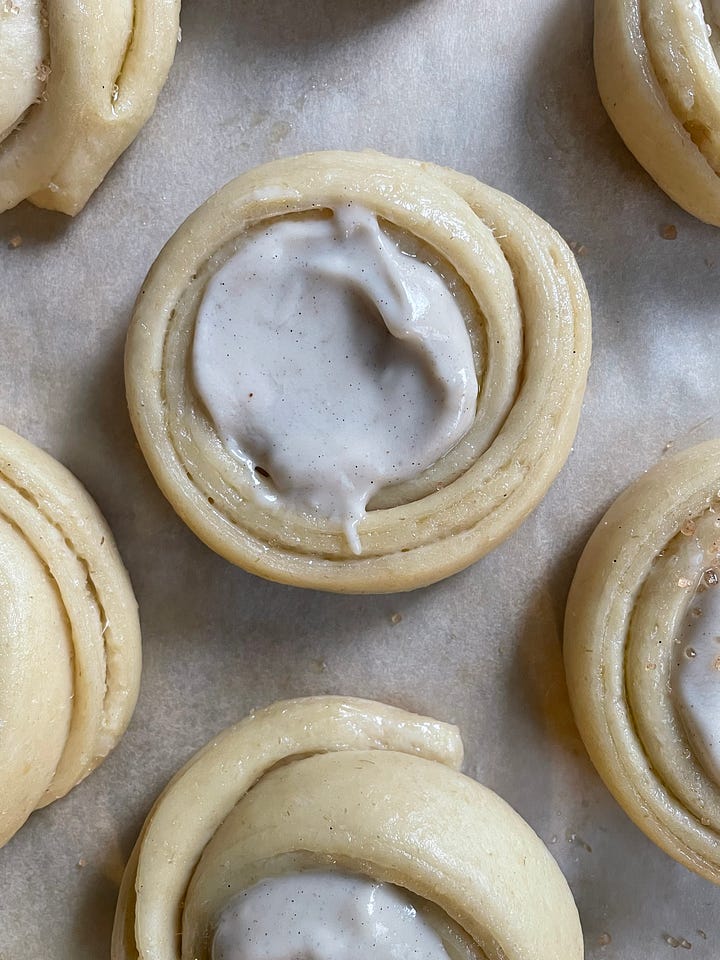
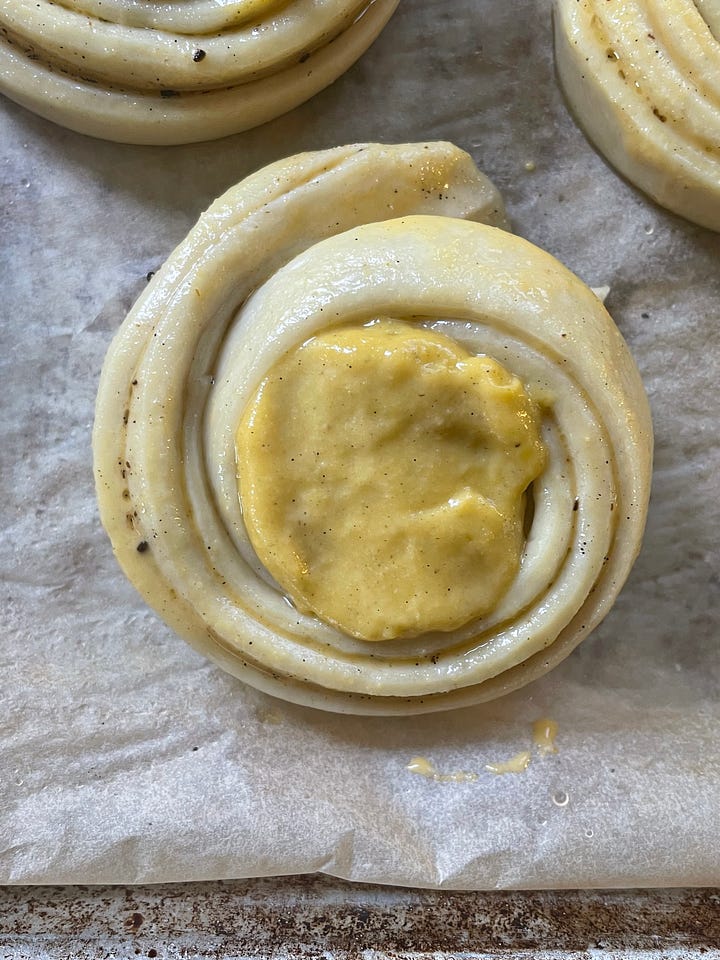
I was very excited when, to address the color issue, the idea of adding carrot or carrot juice occurred to me. Call me crazy, but for years there’s been something about the flavor of carrot juice that reminds me of milk. So that thought combined with its color made carrot juice seem like a perfect addition to my pastry cream. And since I was already using a blender, I could go straight to the source and use a piece of carrot. For the missing tangy undertone, I reached for an MVP: apple cider vinegar (just the tiniest bit).
This was The One.
The Recipe: Plant-Based Pastry Cream (Crème Pâtissière)
The recipe that follows makes a plant-based pastry cream that is incredibly creamy, delicately sweet and flavorful with hefty doses of vanilla bean and olive oil. It can be used in any recipe that calls for crème pâtissière or pastry cream, and, as I confessed earlier, it can be eaten straight up from a bowl.
Yield: about 440 g (2 cups)
Total time: 10 minutes, plus cooling
Ingredients:
66 g raw cashews (slightly rounded 1/2 cup)
35 g peeled carrot (about a 1-inch piece)
63 g sugar (5 Tbsp)
13 g cornstarch (UK: “cornflour”) (1 Tbsp + 2 1/2 tsp)
1/2 vanilla bean (no need to split or scrape)
Pinch salt
250 g water (1 cup + 2 tsp)
20 g extra virgin olive oil (1 Tbsp + 2 tsp; See Note)
1/4 tsp apple cider vinegar
Method
In a high-powered blender, combine the cashews, carrot, sugar, cornstarch, vanilla bean, salt, and water. Blend until perfectly smooth, then pass the liquid through a fine-mesh sieve into a small-medium saucepan (discard the filtered solids).
Whisk in the olive oil and vinegar and cook over medium heat, whisking constantly, just until about 30 seconds after it begins to bubble. It should be thick, creamy, and pudding-like, somewhere between the texture of unstrained and strained yogurt.
Scrape it into a storage container and place a piece of parchment directly on top of the cream to prevent a skin from developing. Cover with a lid and refrigerate the cream until ready to use (up to 5 days).
Note: Instead of olive oil, you may use a neutral-flavored vegetable oil such as grapeseed.
Ready for Buns?
Brian has developed a recipe, available now on KP+, for vanilla buns inspired by his travels to Copenhagen. Soft, scented, fluffy and entirely plant-based, it’s a recipe for everyone to enjoy, vegan or not.
Brian Levy is a writer, cookbook author and recipe developer based in the US. His debut book 'Good and Sweet' is available now. Brian writes a regular column on Kitchen Projects - check the archive out here. You can also follow his substack Formal Assignment here.





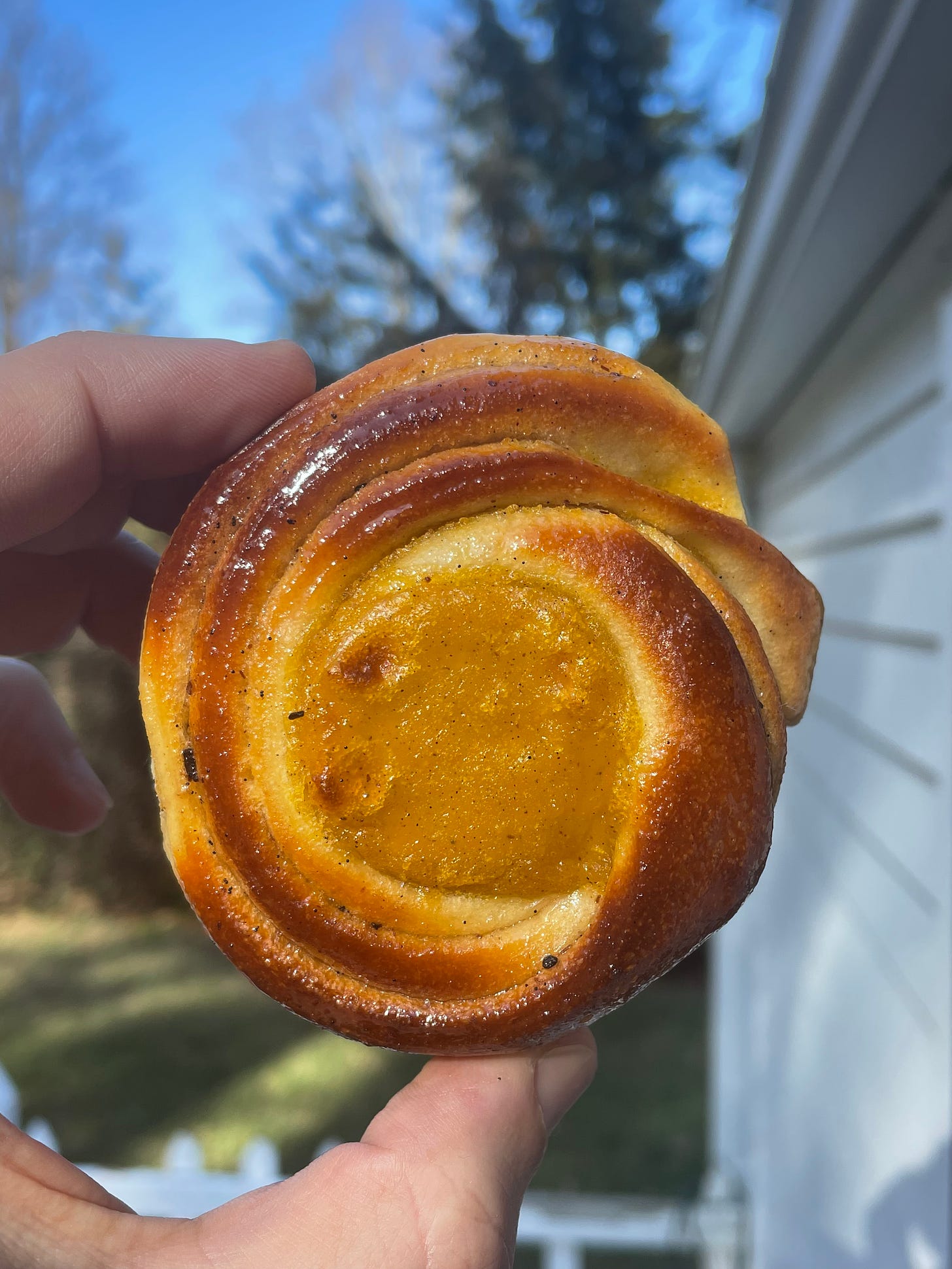
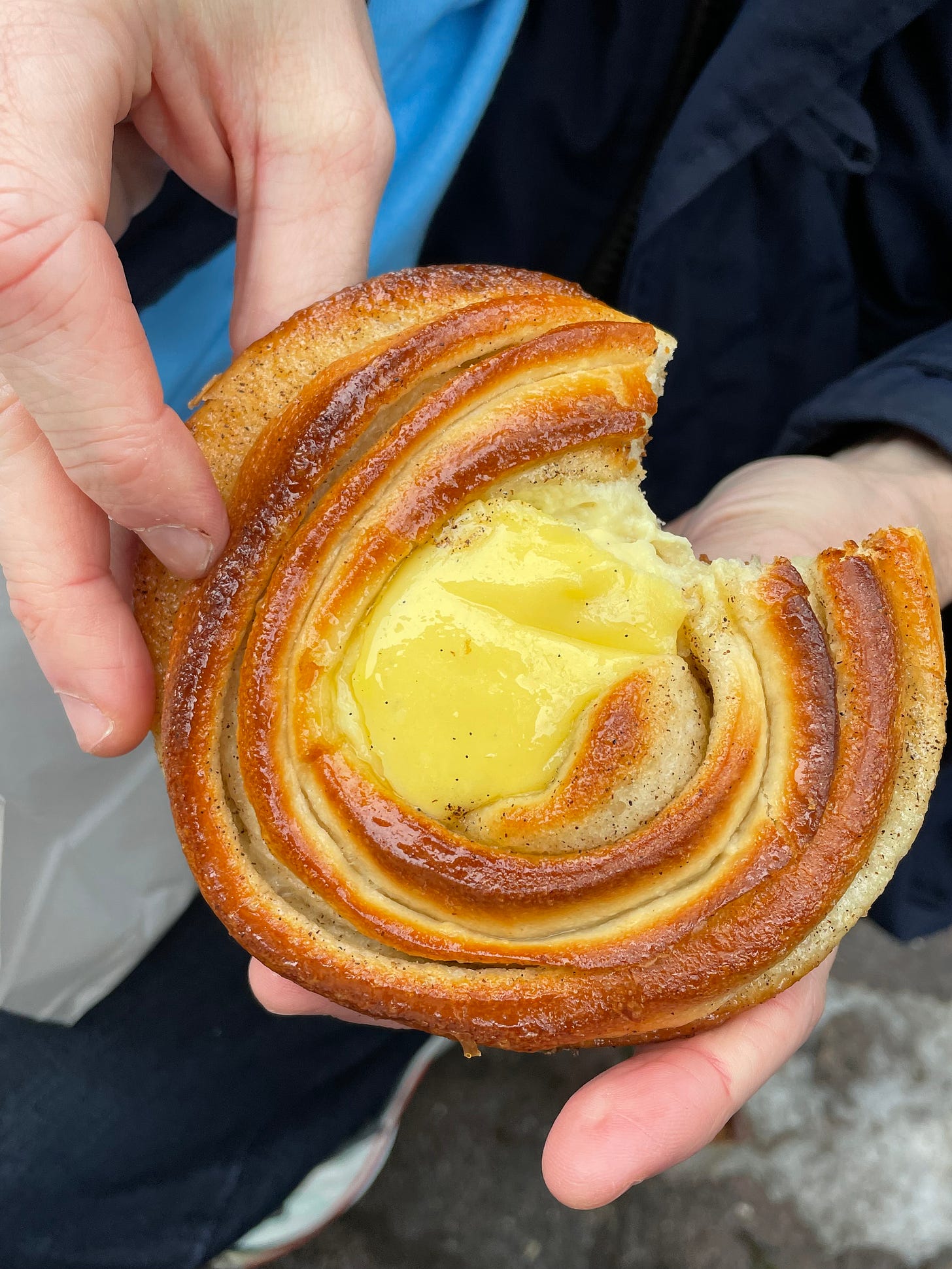
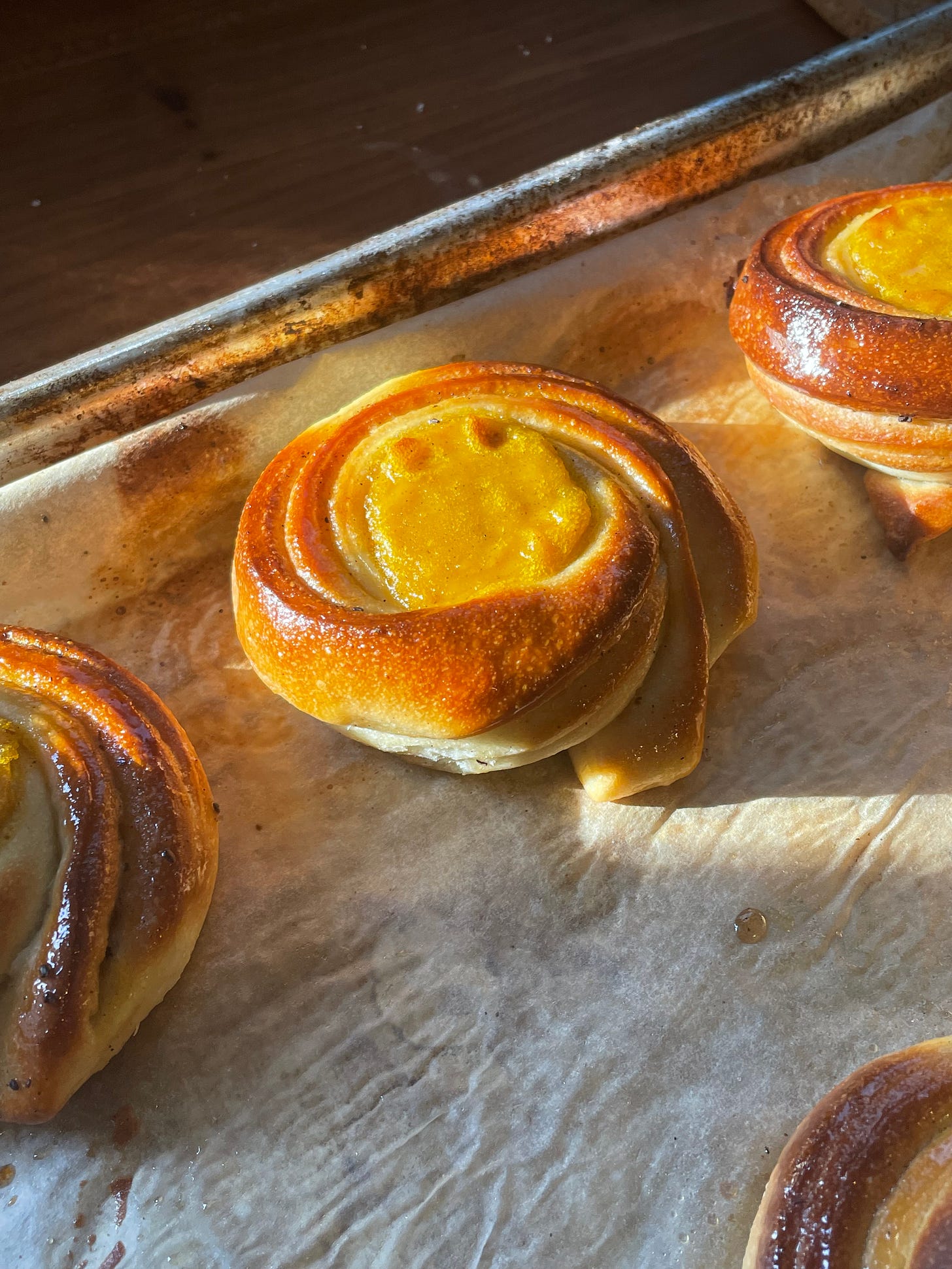
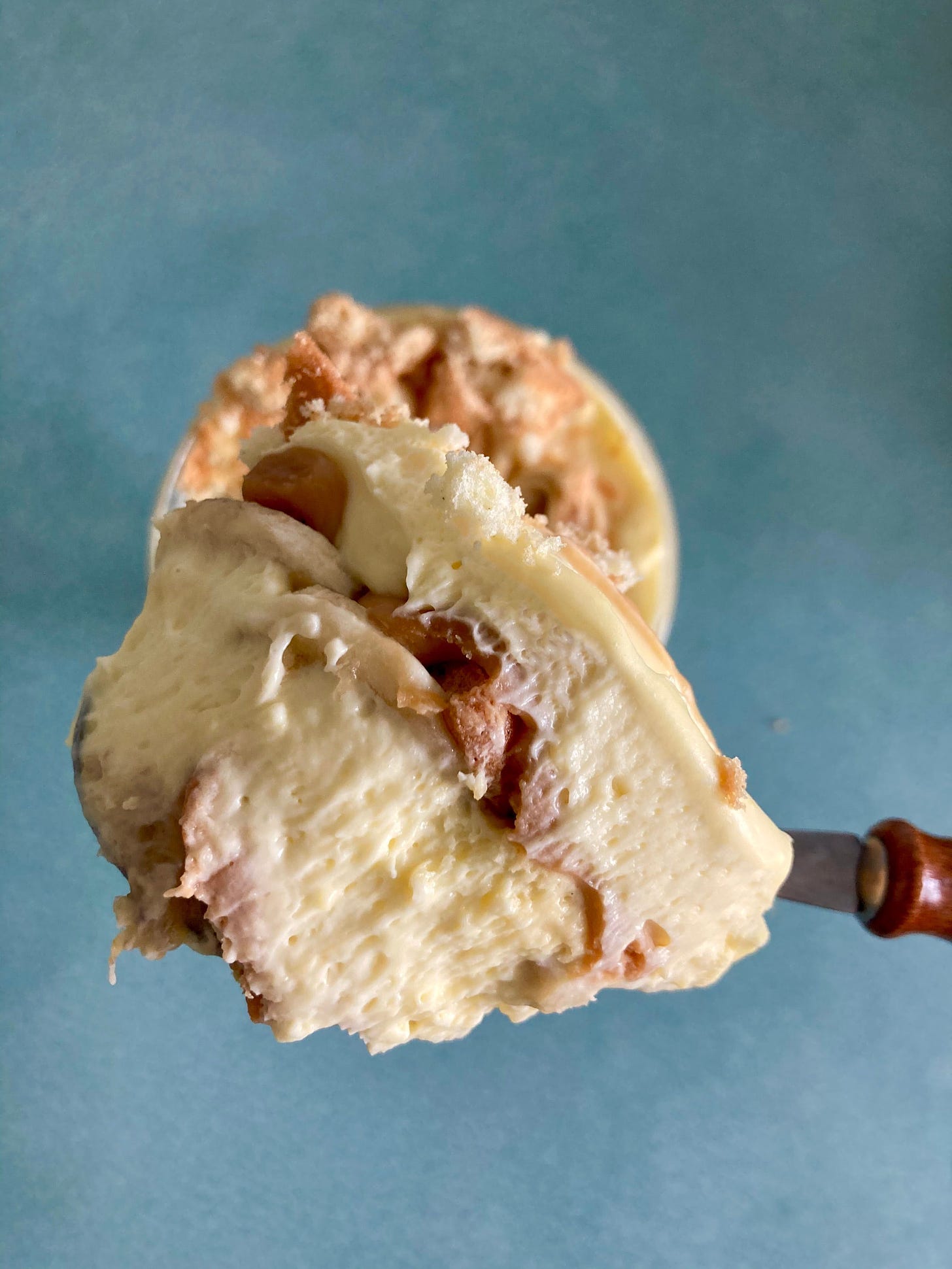
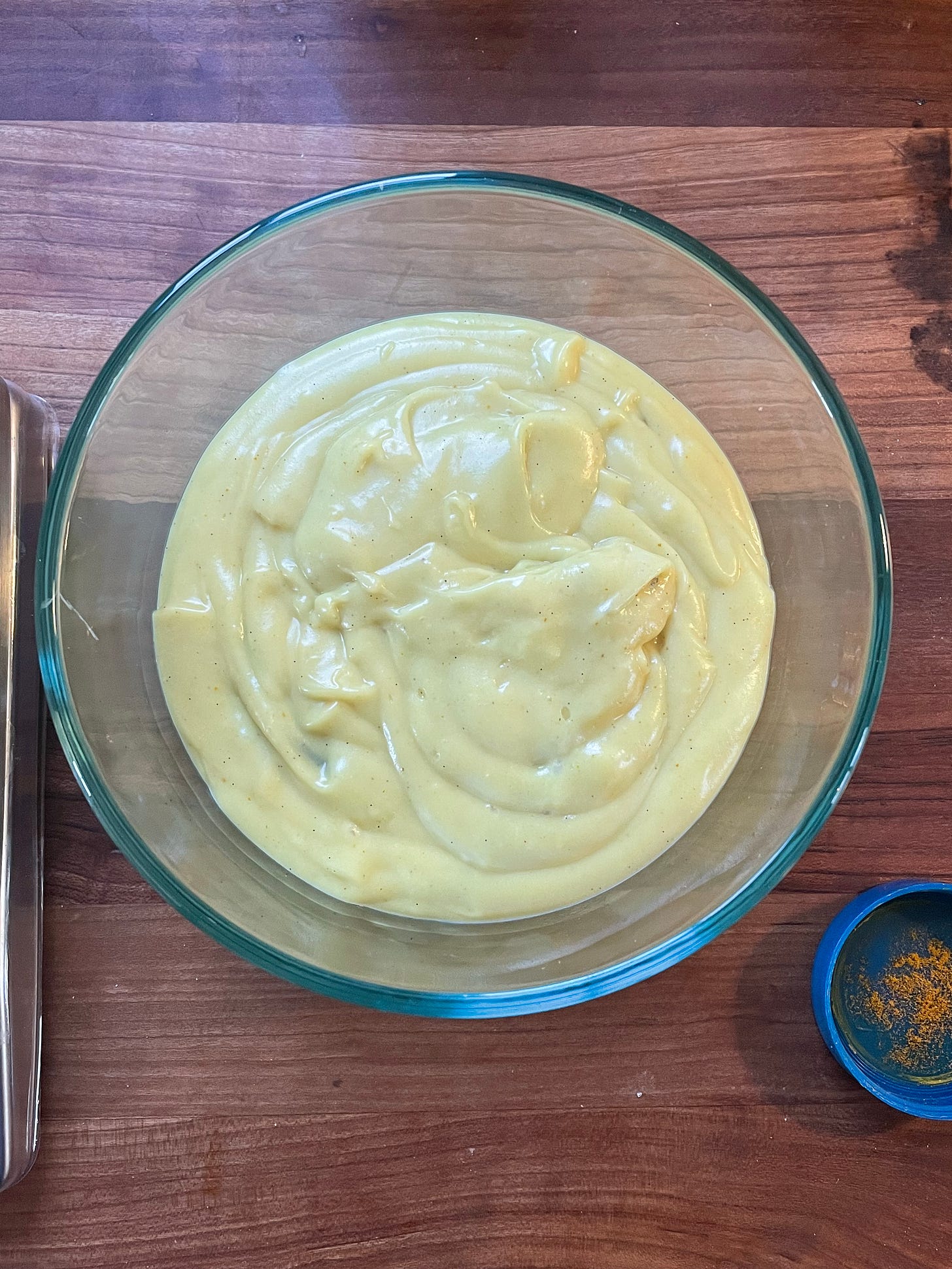
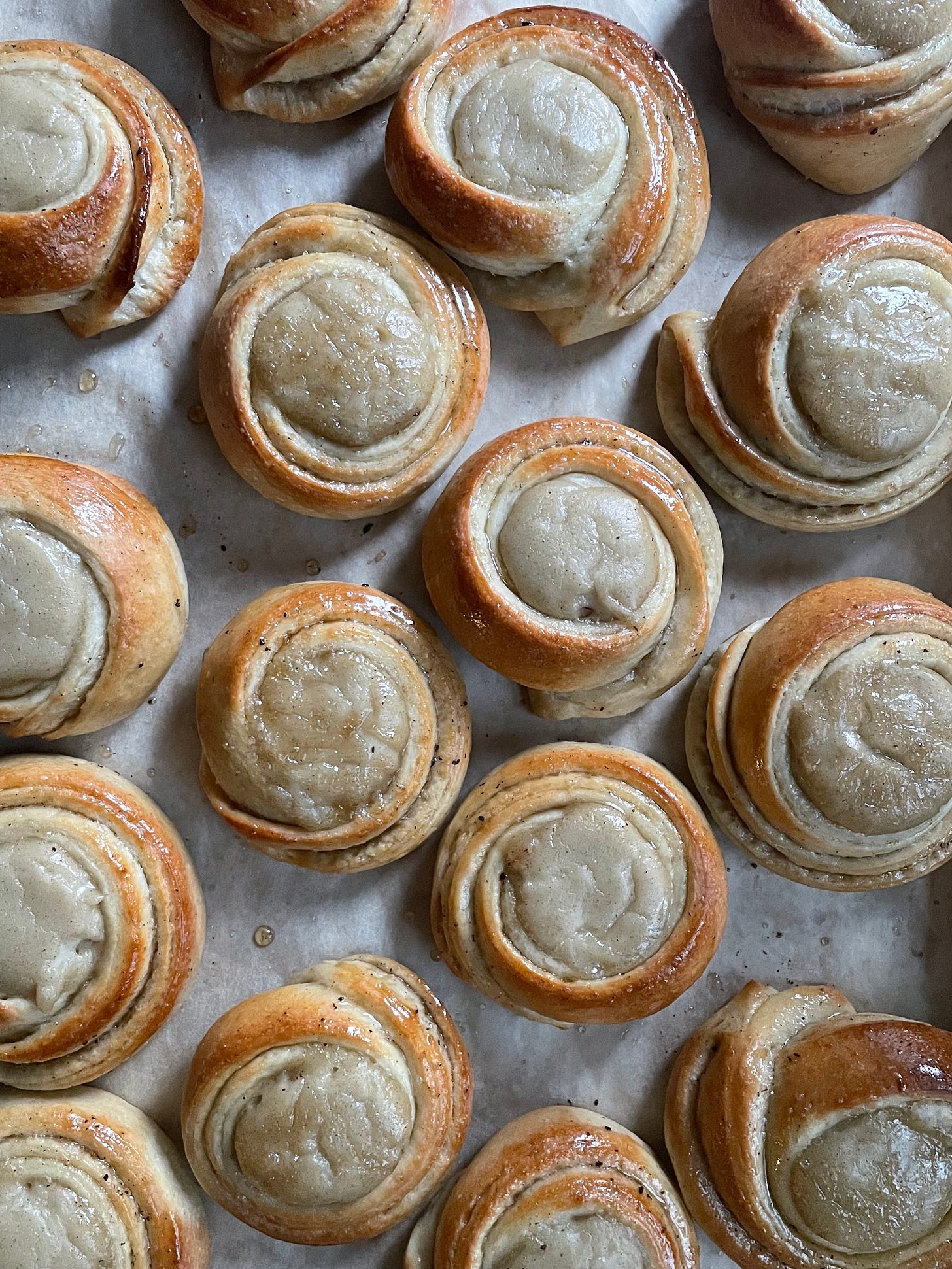
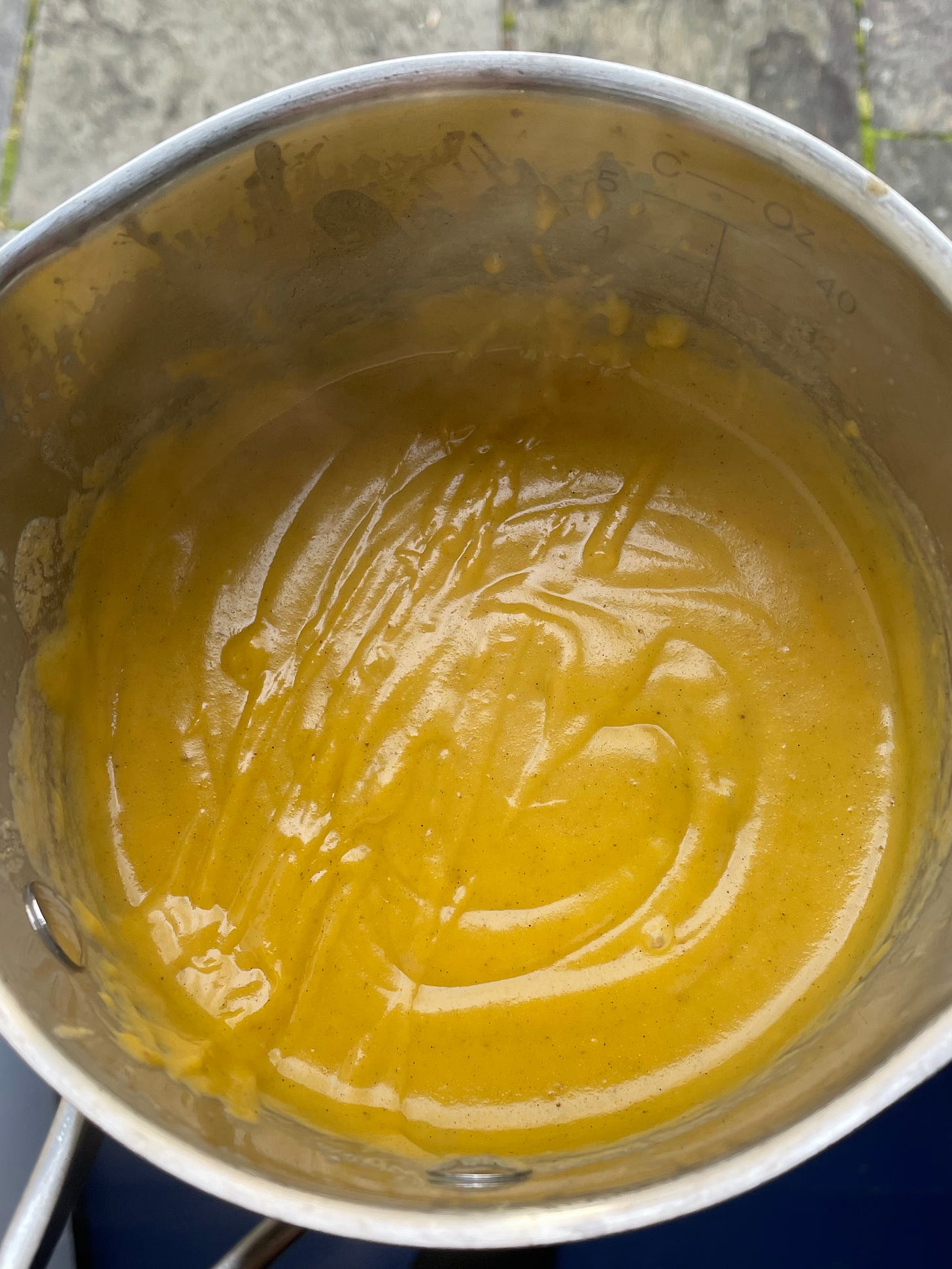
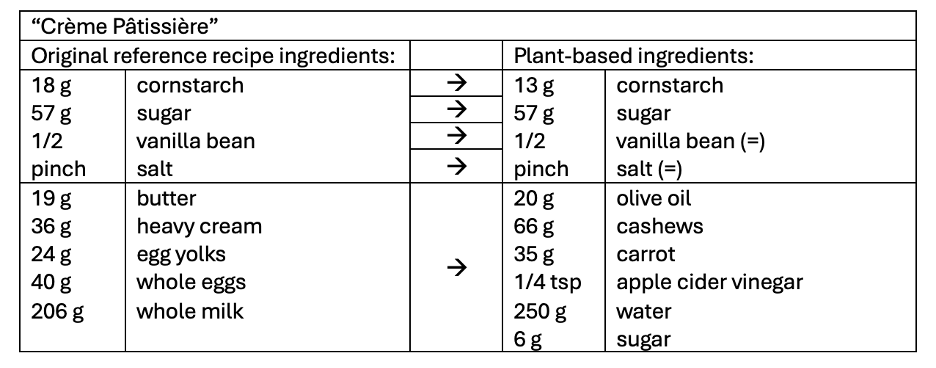
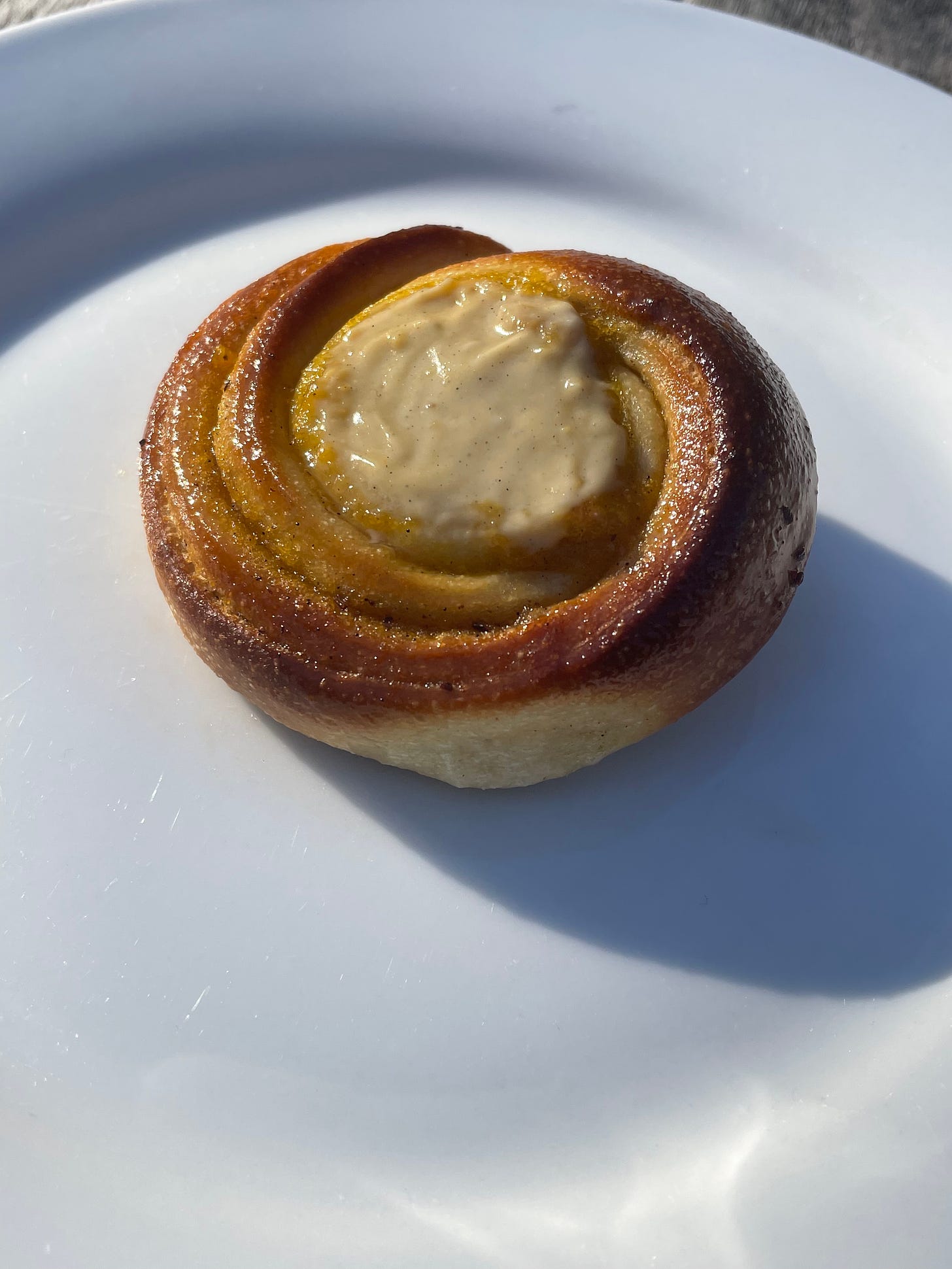

Really enjoyed reading about the process for developing the vegan custard and plan to make it. Sharing this with a friend who does not consume dairy.
NOTE: If you don't have a high-powered blender such as a Vitamix, soak the cashews for 2 to 4 hours at room temperature in the water called for in the recipe (i.e. 250 g), and substitute 35 g of carrot juice for the peeled carrot. The goal is to end up with very little solid matter in the sieve after blitzing.